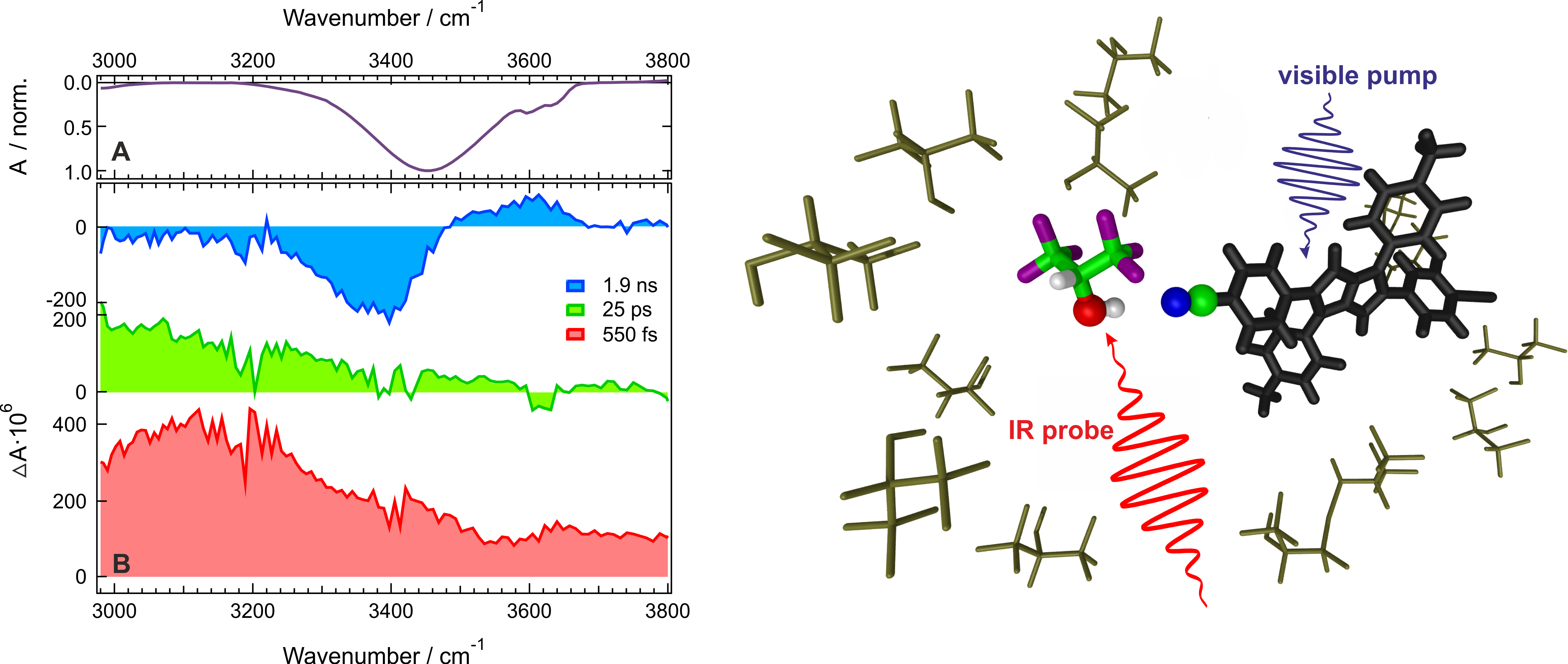Direct Local Solvent Probing by Transient Infrared Reveals the Mechanism of H-Bond Induced Nonradiative Deactivation
Many organic molecules undergo a substantial quenching of their charge-transfer electronic excited state in protic solvents without occurrence of excited-state proton transfer or proton-coupled electron transfer reactions. The mechanism of this H-Bond Induced Nonradiative Deactivation (HBIND) phenomenon has been elusive for a long time. By using ultrafast transient infrared spectroscopy, we show that it can be unambiguously elucidated by probing the local vibrational modes of solvent molecules coupled to the chromophore. Using such ‘solute-pump/solvent-probe’ approach reveals all relevant molecular steps, such as high initial coupling to the H-bonded solvent molecules, symmetry breaking, H-bond strengthening, and excitation energy dissipation to the solvent molecules. Our data reveal the key role of both solute-solvent H-bond strength and solvent-solvent intermolecular coupling for the efficient HBIND. Polarization-resolved experiments give an additional insight into the structure of a reactive intermediate.
